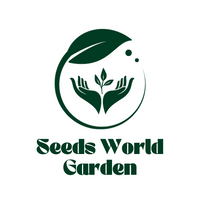Quantity: 100+ Seeds
Color: As picture
Free Shipping and Buy 2 Get 1 Free
1. Begonia is an ornamental plant that is native to tropical and subtropical regions of the world. It is a perennial flowering plant, with vibrant colored leaves and beautiful flowers. The plant is not only attractive but it is also easy to care for and maintain.
2. The most common type of Begonia is the tuberous Begonia, which produces flowers from tuberous roots. The flowers can come in many different colors, ranging from white, pink, orange, yellow, and purple. The leaves of the plant are also quite varied and can have a range of colors and patterns.
3. Grains are a type of seed that is produced by certain grasses and plants. Grains are used for human consumption as a food source. Common types of grains include wheat, rice, oats, barley, and corn. Grains are a good source of essential vitamins and minerals that are found in a balanced diet.
4. Grains are a versatile food source and can be used in a variety of ways. They can be cooked and consumed as a side dish, used in baking, or included in soups and stews. Grains also contain dietary fiber, which can help promote healthy digestion.
5. Grainproducts can be used to create a variety of dishes, such as breads, pancakes, cereals, and more. Grains are also commonly used to make beer and other alcoholic beverages. Grains can be ground into flour, which is then used to make breads and other baked goods.
How to Grow Your :
1. Soak in water for 24 to 48 hours before you t them. This allows moisture to penetrate the coat and leads to swelling of the ’s parts to spur germination.
2. Find a location with well-drained, organic-rich, sandy or silt loam and with a minimum average temperature of about 60 degrees Fahrenheit during the t’s early growth. The most favorable temperature range is between 75 to 80 degrees. The t should ideally receive six hours of sun per.
3. Till the soil to rid it of weeds and to increase air circulation. Apply compost to the soil after tilling.
4. Place two or three in a hole about ½ to 1 inch deep in the soil along a fence or under a 6-foot-tall trellis form. The holes should be 15 to 23 inches apart and rows 3 to 5 feet apart.You can also start in small plastic pots in a commercial soil mix.
Shipping:
All orders Free Shipping and Buy 2 Get 1 Free. Normally North American delivery time will take 7-14 days (shipping delays due to large orders will add 1-3 weeks depending on time). Other areas please wait 14-28 days for the order to arrive.
RETURN POLICY
We have a 30-day return policy, which means you have 30 days after receiving your item to request a return.


